Perched at 7,000 feet in southern Sikkim, Ravangla (or Ravongla) is a breathtaking hill station where misty mountains meet spiritual serenity. Famous for its panoramic Himalayan views, ancient monasteries, vibrant rhododendron forests, and tranquil vibes, this hidden gem has become a favorite for both locals and travelers seeking peace and adventure. If you’re planning sightseeing in Ravangla, discover the Top 11 Attractions & Things to Do, along with the best time to visit Ravangla for an unforgettable Himalayan escape!.
Top 11 Attractions, Sightseeing & Tourist Spots in Ravangla: A Serene Getaway
1. Buddha Park (Tathagata Tsal)
A majestic 130-foot statue of Lord Buddha dominates this spiritual park, built to commemorate the 2550th birth anniversary of Buddha. Surrounded by manicured gardens and a panoramic backdrop of the Himalayas, this is one of the most iconic sights in Ravangla.
- Highlights: Meditation center, museum, prayer halls, fountains.
- Tip: Visit in the early morning for fewer crowds and clearer views.
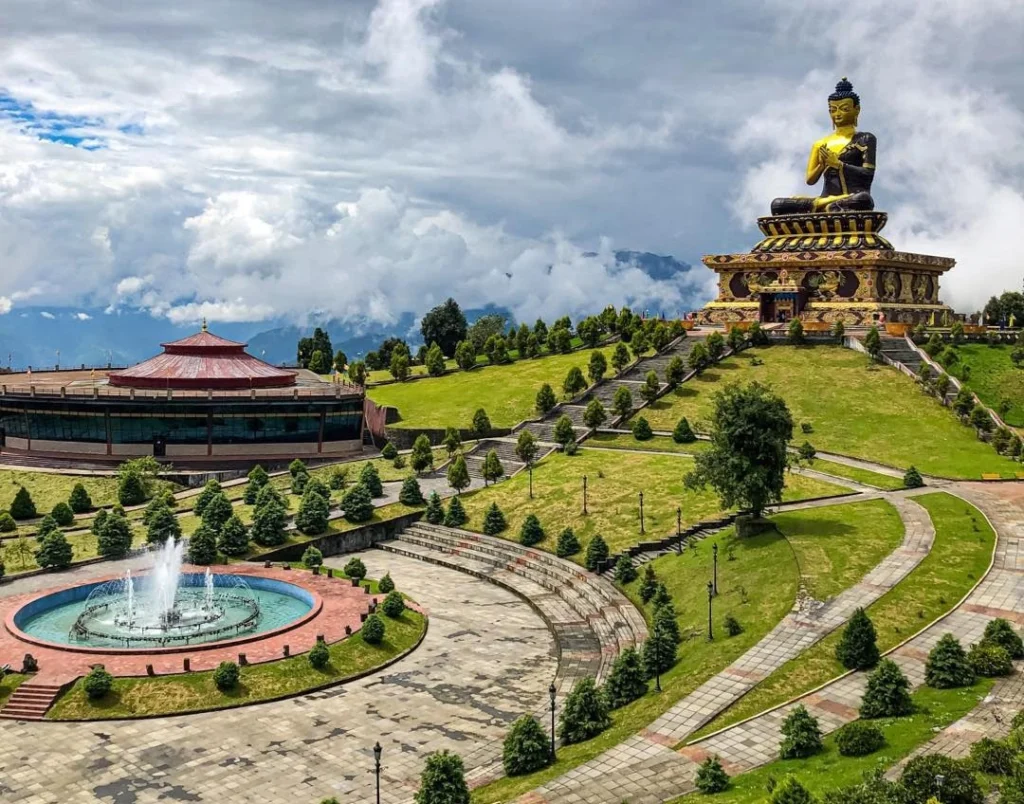
2. Ralong Monastery
Located about 6 km from Ravangla, Ralong Monastery is an important center of Tibetan Buddhism. The original monastery (Old Ralong) and the newer version (Palchen Choeling Monastic Institute) are both worth visiting.
- Highlights: Intricate murals, ancient scriptures, religious festivals.
- Festival to Attend: Pang Lhabsol and the annual Cham dance.
3. Samdruptse Hill and Statue
While technically closer to Namchi, this massive statue of Guru Padmasambhava can be visited en route. At 135 feet tall, it overlooks the landscape with divine grace.
- View: Offers stunning vistas of Mount Kanchenjunga.
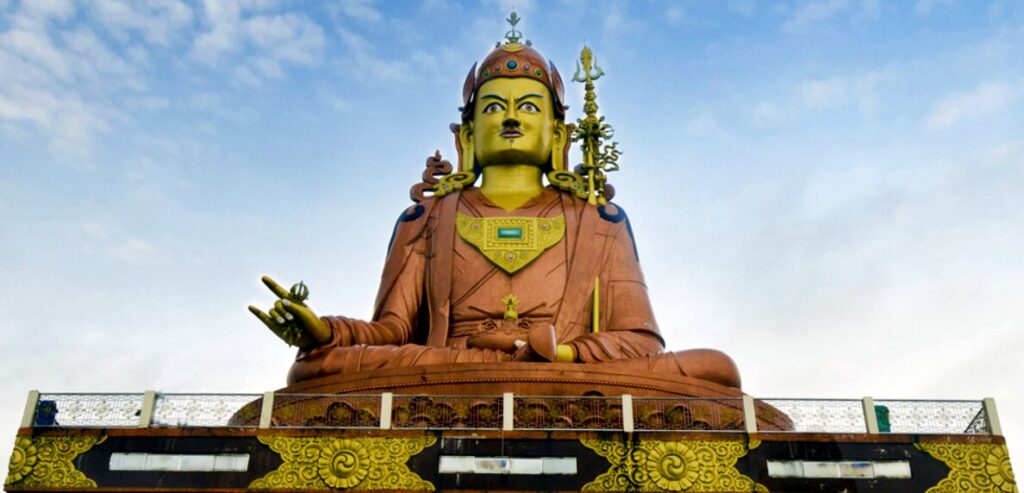
- Spiritual Festivals and Rituals of Sikkim: The Land of Vibrant Spiritual Festivals Amidst the Himalayas
- Exploring the Sacred Temples and Monasteries of Sikkim: A Spiritual Journey Through the Himalayas
4. Temi Tea Garden, A Serene Getaway in Sikkim
Perched just 30 km southwest of Ravangla (a scenic 1.5-hour drive), Temi Tea Estate isn’t just Sikkim’s sole tea garden – it’s a national award-winning plantation that rightfully earns its spot among the Top 11 Attractions & Sightseeing gems.
Why It’s Special:
- Certified organic since 2016, producing premium single-origin teas
- Panoramic views of Mt. Kanchenjunga from rolling emerald terraces
- Hands-on experiences: plucking demonstrations, factory tours, and tea-tasting sessions
Best Time to Visit Ravangla:
March-May (spring harvest) when bushes are lush, or October-November (autumn flush) for complex flavored brews. Morning visits (8-11 AM) offer misty valley vistas perfect for photography.
Pro Tip: Pair your visit with nearby Ravangla attractions like Buddha Park for a perfect Sightseeing day trip.
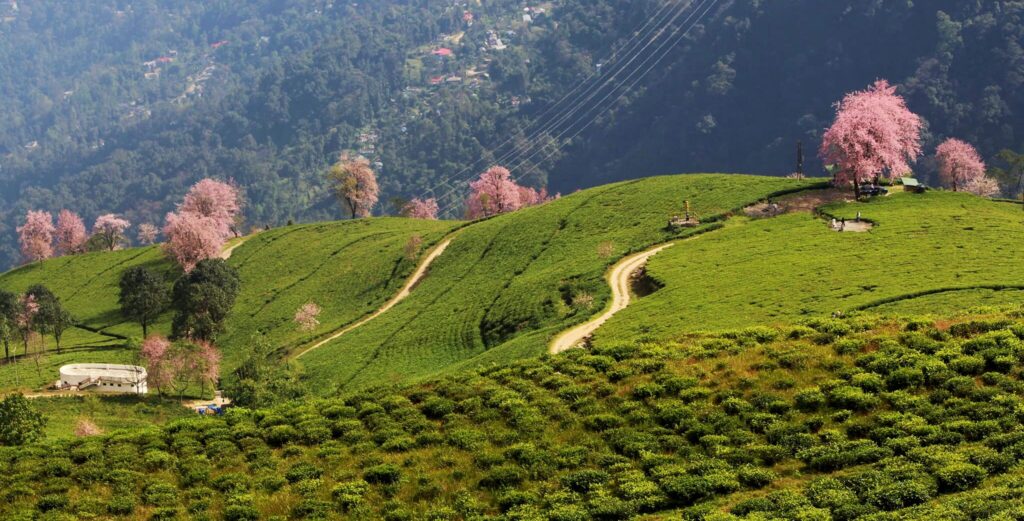
5. Trek to Maenam Hill and Maenam Wildlife Sanctuary
A highlight among the Top 11 Attractions and Sightseeing in Ravangla, this moderate 4-6 hour trek through Maenam Wildlife Sanctuary rewards hikers with 360° Himalayan views and rare flora. Best attempted March-May or October-November. A must for trekkers and nature lovers. The Maenam Hill Trek is a 7–8 km hike starting from Ravangla and ascending to the summit, which offers spectacular views of the Himalayan ranges.
- Wildlife: Red pandas, Himalayan black bears, and many species of birds and butterflies.
- Tip: Hire a local guide for the trek.
6. Borong Village
Located about 17 km from Ravangla, Borong is a serene village known for its hot springs and homestay culture. It offers an immersive Sikkimese experience and is ideal for nature-based relaxation. This is best if combined with Sightseeing in Ravangla.
- Activities: Bird watching, local food exploration, nature walks.
7. Rayong Sunrise Viewpoint
Located 8 km from Ravangla, this viewpoint is perfect for early risers who want to catch the sun’s first rays striking the Himalayan peaks. It’s particularly photogenic on clear mornings.
8. Bon Monastery (Bon Yung Dung Monastery)
This lesser-known site is among the few Bon monasteries in India. Bon is a spiritual tradition pre-dating Buddhism in Tibet and offers unique insights into Sikkimese spirituality.
9. Tendong Hills
Steeped in Lepcha legends, these rolling hills offer sunrise views over Ravangla valley. Visit during spring (April-May) for blooming rhododendrons – a perfect addition to your Top 11 Attractions itinerary.
10. Ralang Monastery
Sikkim’s largest Kagyu Buddhist monastery dazzles with intricate murals and the annual Pang Lhabsol festival (August-September). A spiritual cornerstone among Ravangla’s sightseeing treasures.
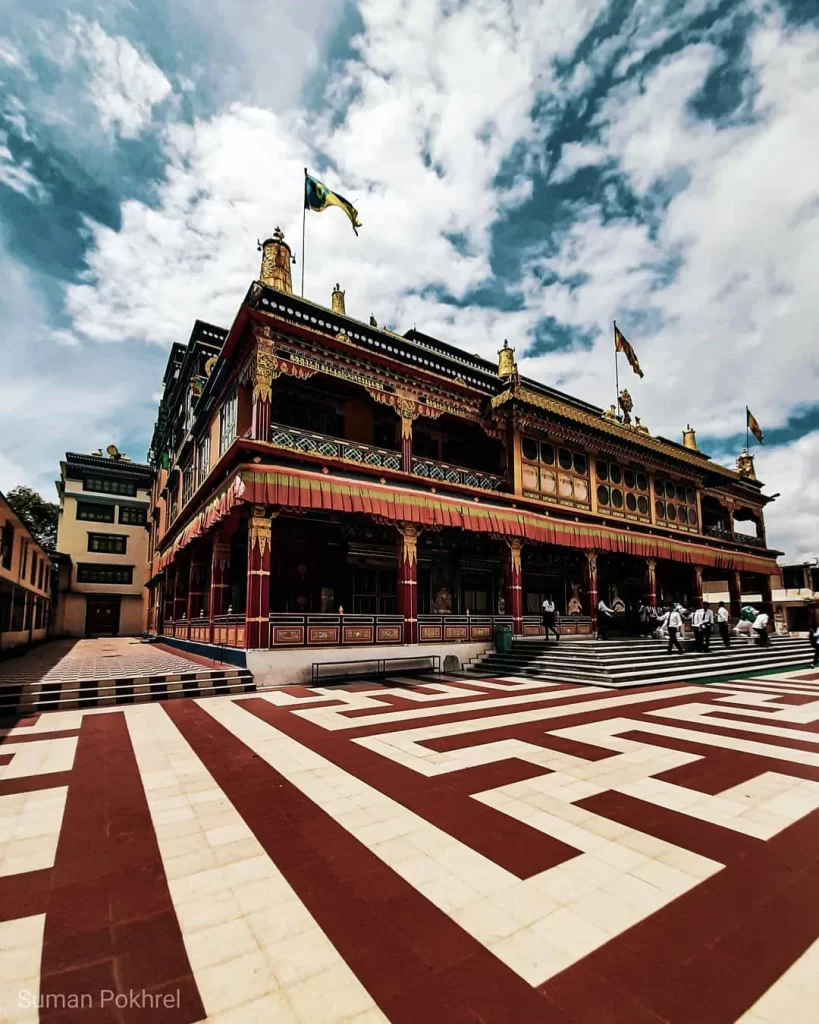
11. Ralang Cha-Chu
Discover the sacred Ralang Hot Springs – where healing mineral waters meet Himalayan spirituality near the iconic Ralang Monastery. These therapeutic pools shine brightest in winter (November-February), making them a must-experience in our Top 11 Attractions & Best Time to Visit Ravangla guide. Time your soak when crisp mountain air enhances the warmth, and include this rejuvenating stop on your perfect Ravangla itinerary.
Accommodation in Ravangla
Ravangla offers a variety of accommodations:
- Luxury Stays: Hotels with mountain views, hot meals, and peaceful locations.
- Mid-Range: Comfortable guesthouses with modern amenities.
- Budget Options: Hostels, small lodges, and local homestays.
- Homestays: Highly recommended for cultural immersion. Try ones in Kewzing and Borong.
Food and Cuisine
While in Ravangla, don’t miss out on local Sikkimese delicacies:
- Best Places to Visit in Lachen: A Complete Travel Guide to North Sikkim’s Hidden Gem
- Exploring the Sacred Temples and Monasteries of Sikkim: A Spiritual Journey Through the Himalayas
- Unveiling Sikkim’s Hidden Gems: 15 Offbeat Destinations for the Curious Traveler
- Exploring Gangtok : The Vibrant Capital of Sikkim
- Exploring Sikkim in 2025: Best Tourist Destinations, Food, Culture & Adventure in the Himalayas
- Thukpa: A noodle soup with vegetables or meat.
- Momos: Steamed dumplings, widely loved.
- Phagshapa: Pork with radish and chilies.
- Gundruk Soup: A fermented leafy green soup.
- Local Tea: Try freshly brewed tea from the Temi Garden.
Restaurants are limited, but most hotels and homestays serve delicious home-cooked meals.
When is the Best Time to Visit Ravangla?
Ravangla is a stunning Himalayan escape that dazzles in every season—whether blanketed in winter snow, bursting with spring blooms, or glowing under autumn skies. The best time to visit Ravangla depends on your travel dreams: chase snowy mountain vistas, wander through flower-filled trails, or enjoy crisp, crowd-free serenity. Below, we break down Ravangla’s seasonal magic while highlighting must-see spots from our Top 11 Attractions & Best time to Visit Ravangla list!
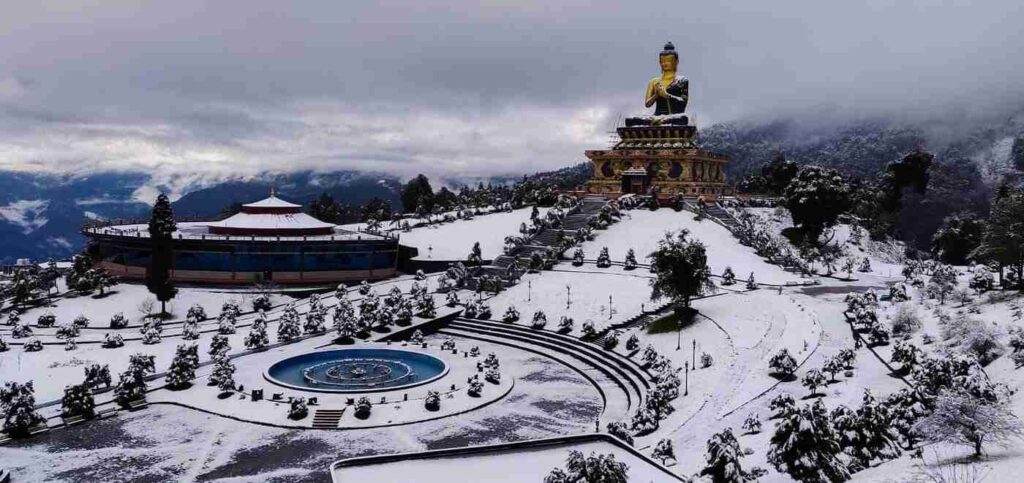
Spring and Summer (March to May) Best time to Visit Ravangla
Spring and early summer are undoubtedly the most vibrant months to visit Ravangla. During this period, the landscape comes alive with the vivid hues of blooming rhododendrons, orchids, and other Himalayan flora. The weather is comfortably cool, with temperatures ranging from 10°C to 20°C—perfect for sightseeing, gentle treks, and photography. With the skies mostly clear and the sun warm but not harsh, this season draws nature lovers, honeymooners, and families looking for a refreshing mountain escape. If you’re keen on visiting the Temi Tea Garden or planning hikes to Maenam Hill, this is arguably the best time to go.
Monsoon (June to September)
The monsoon transforms Ravangla into a lush green paradise, with mist rolling through the valleys and the air rich with the scent of wet earth. It’s a romantic time to visit for those who enjoy solitude and the monsoon mood. However, it’s also the most challenging season for travel. Heavy rainfall often leads to roadblocks and landslides, especially in hilly terrain. Treks may be restricted, and outdoor sightseeing is limited. That said, budget travelers and offbeat explorers may still find value in this quieter, less crowded window—provided they’re prepared for the weather and travel disruptions.
Autumn (October to November)
- How to reach Ganesh Tok – A Scenic Short Trek in Gangtok
- How to Reach Hanuman Tok – Best Routes & Travel Tips
- Kupup/Elephant Lake – Routes, Permits & Travel Tips
- How to Reach Nathula Pass – Permits, Routes & Pro Tips
- Best Time to Visit Nathula Pass: Season-by-Season Guide
Autumn is a sweet spot for visiting Ravangla. The monsoon has washed the dust from the air, leaving behind crystal-clear skies and fresh greenery. Temperatures remain cool and comfortable, ideal for sightseeing and outdoor activities. This is an especially rewarding time for photographers and mountain lovers, as the views of Mount Kanchenjunga and the surrounding peaks are typically at their sharpest and most vivid. The post-monsoon clarity also makes it a great time for visiting monasteries, tea gardens, and cultural spots without worrying about rain or haze.
Winter (December to February) – Best time to Visit Ravangla
If you’re looking to experience a touch of snow in the Eastern Himalayas, winter is the time to go. Ravangla turns into a peaceful and chilly retreat, with temperatures occasionally dipping to 0°C or lower. Snowfall isn’t guaranteed every year, but higher-altitude areas like Maenam Hill and nearby Borong often receive light snow, especially between late December and early February. The crisp air, misty mornings, and quiet trails make it ideal for introspective travel, meditation, and cozy homestays. Just make sure to pack warm clothing and check local conditions in advance, especially if you’re planning to trek or drive during this season.
There isn’t a single best time to visit Ravangla—each season offers a distinct experience, from the floral burst of spring and the moody monsoon mists to the golden light of autumn and the quiet charm of winter. Choose the timing that best matches your travel style, and Ravangla is sure to leave you with memories etched in mountain magic.
Conclusion
Sightseeing in Ravangla: A Serene Getaway in Sikkim reveals more than just postcard-perfect landscapes – it’s a harmonious blend of Himalayan spirituality, vibrant culture, and breathtaking nature that captivates every traveler. From the lush tea gardens of Temi to the sacred heights of Buddha Park, our Top 11 Attractions & Best Time to Visit Ravangla guide helps you experience this mountain paradise at its magical best.
Whether you’re trekking through misty Maenam Hill, sipping world-class Temi tea, or finding peace beneath the Great Buddha statue, Ravangla weaves unforgettable moments of tranquility and adventure. The secret? Timing your visit right – discover when to witness blooming rhododendrons, crisp mountain vistas, or snow-dusted trails for your perfect Himalayan escape.
- Best Places to Visit in Lachen: A Complete Travel Guide to North Sikkim’s Hidden Gem
- Exploring the Sacred Temples and Monasteries of Sikkim: A Spiritual Journey Through the Himalayas
- Unveiling Sikkim’s Hidden Gems: 15 Offbeat Destinations for the Curious Traveler
- Exploring Gangtok : The Vibrant Capital of Sikkim
- Exploring Sikkim in 2025: Best Tourist Destinations, Food, Culture & Adventure in the Himalayas

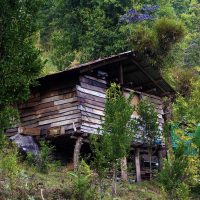
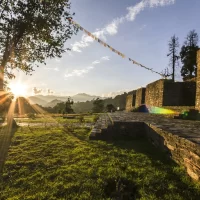
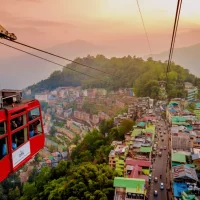
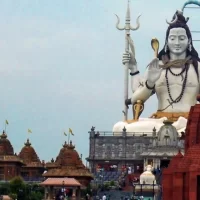
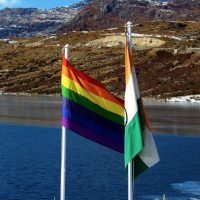
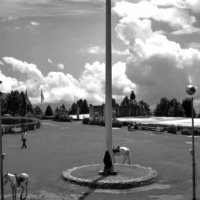
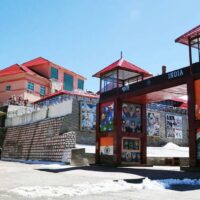
Leave a Reply